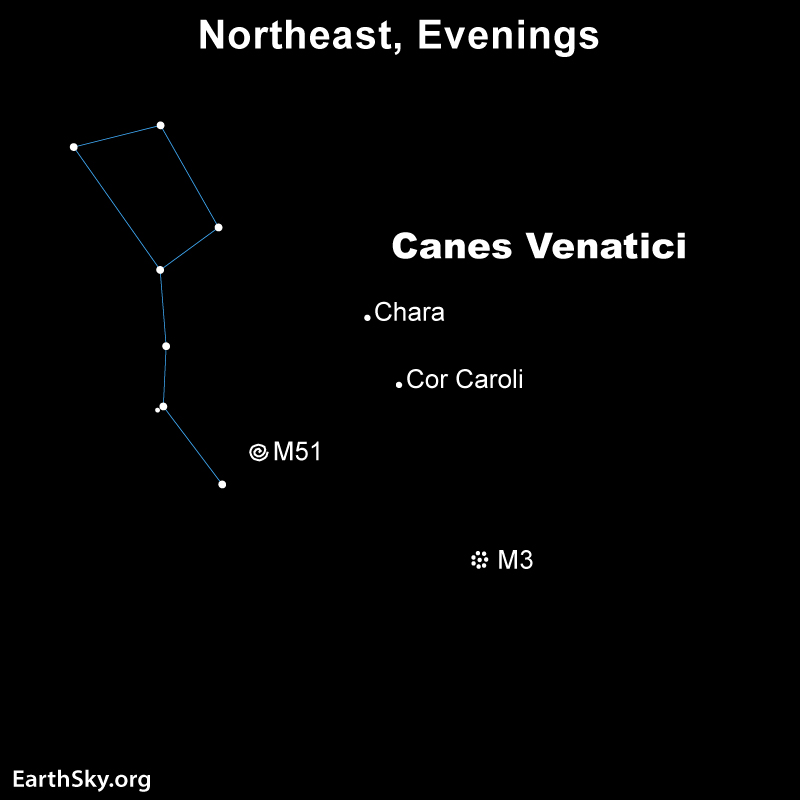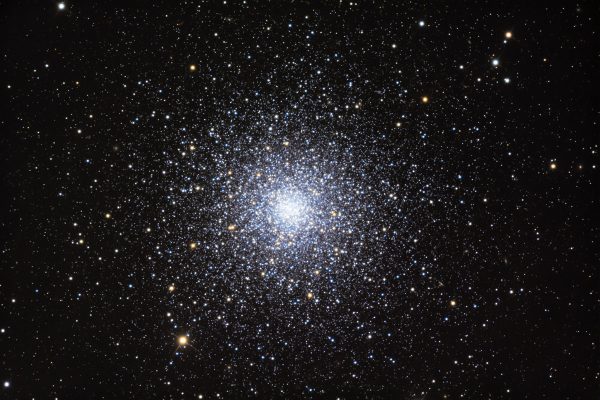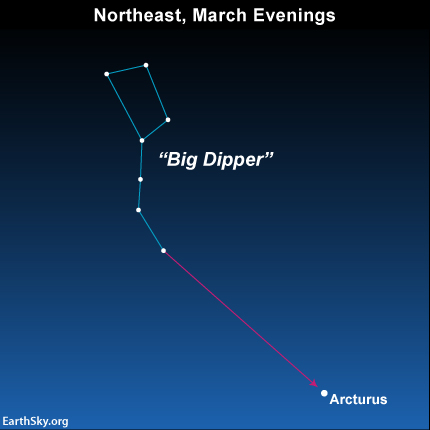
Big Dipper as a guide to the Hunting Dogs
Tonight, or any March evening, look for the Big Dipper in the northeast sky. This asterism, or star pattern – one of the most noticeable from Northern Hemisphere locations – is part of the constellation Ursa Major, the Great Bear. And, if you can find the Big Dipper, you can also find two Hunting Dogs seen by the ancient stargazers to be nipping at the Bear’s heels. In like manner, the Hunting Dogs are a separate constellation: tiny Canes Venatici.
Indeed, you’ll need a dark sky to see these two little stars snuggled in the arc of the Big Dipper. Originally, they were called by the names Chara and Asterion.
The 2022 lunar calendars are still available. Order yours before they’re gone!

Cor Coroli, Heart of Charles
However, the eastern star is now called Cor Caroli, or Heart of Charles. The Polish astronomer Johannes Hevelius devised this constellation in 1690. He named it for his patron, specifically.
Additionally, the most famous object in this region of the sky is M51, the Whirlpool Galaxy. It is beautiful, indeed, when seen through telescopes and appears dramatic in photographs.
Note, however, that this galaxy is difficult or impossible to glimpse with binoculars.


Globular cluster M3
But, there’s also another faint object at the extreme edge of Canes Venatici that your binoculars should pick up. This object is Messier 3, or M3, a globular star cluster located some 48,000 light-years away.
Given that it is so far away, binoculars see M3 as a dim blur of light, best seen with averted vision.
In a dark sky, M3 is relatively easy to find. Notice, for instance, that on the chart below that it lies almost midway between the bright star Arcturus and Cor Caroli:

Use the Big Dipper to find Arcturus
But, if you’re not sure which star is Arcturus … remember to follow the arc of the Big Dipper’s handle in order to locate this star, as shown on the chart below:

Bottom line: Find out how to use the Big Dipper to find the constellation Canes Venatici, also known as the Hunting Dogs, which contains the stars Chara and Asterion.
EarthSky astronomy kits are perfect for beginners. Order today from the EarthSky store











